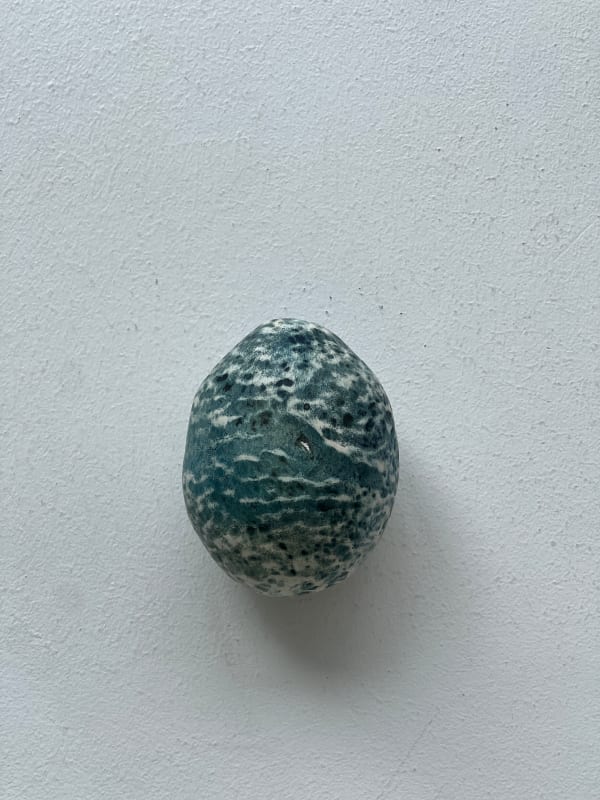In This Guide:
Congratulations on your new art acquisition! Whether you've just purchased your first original painting or added another piece to your growing collection, you've made an investment that will bring beauty and meaning to your life for years to come. However, owning art is just the beginning, properly caring for your artwork ensures it maintains its beauty, preserves its value, and continues to enrich your daily experience.
This comprehensive guide provides the essential knowledge you need to protect your investment through proper hanging, cleaning, and environmental care. From understanding the correct way to handle different mediums to creating the ideal conditions for long-term preservation, we'll cover the professional standards that museums and galleries use to maintain their collections. These same principles, adapted for home use, will help ensure your artwork remains as vibrant and intact as the day you brought it home.
We want every collector to enjoy their art with complete confidence, knowing they're taking the best possible care of these precious pieces that reflect Scotland's rich artistic heritage.
The Foundation of Artwork Preservation: Environment & Handling
Ninety percent of art care involves creating a stable, safe environment before problems arise, making prevention far more important than any corrective measures you might take later. Understanding and controlling the environmental factors that affect artwork forms the cornerstone of successful art preservation, whether you own paintings by Christine Clark, ceramics by Judith Davies, or mixed media works by Robert Pereira Hind.
Professional conservators emphasise that the vast majority of artwork damage occurs gradually through exposure to inappropriate environmental conditions rather than sudden accidents. This means that the choices you make about where and how to display your art have far greater long-term impact than occasional cleaning or maintenance.
-
 Christine ClarkOil on canvasEternity in Love with TimeUnframed Size: 130 x 130 cm
Christine ClarkOil on canvasEternity in Love with TimeUnframed Size: 130 x 130 cm -
-
How to Clean Your Art Without Damaging It
The cardinal rule of art cleaning is that less intervention is always better than more, and improper cleaning represents one of the most common ways collectors inadvertently damage their artwork. Understanding what you can safely do yourself versus when to consult professionals protects your investment whilst maintaining your art's appearance.
Different mediums require different approaches, and what works safely for one type of artwork can destroy another. Never use water, household cleaners, or chemical solvents on any painted surface, as these can cause irreversible damage including paint loss, staining, or chemical reactions that worsen over time.
The Only Safe Way to Clean a Painting
For paintings, whether oils, acrylics, or watercolours, limit yourself to gentle dusting with a soft, natural-hair brush. Use a clean, dry brush with soft bristles, working gently across the surface to remove accumulated dust and debris. Work from top to bottom with light, even strokes, allowing gravity to help remove particles rather than pressing them into the paint surface.
Never use cloths, tissues, or paper towels on painted surfaces, as these can scratch delicate paint layers or leave fibres embedded in textured areas. Avoid using compressed air or vacuum cleaners near artwork, as the force can damage loose paint or drive debris deeper into crevices.
If you notice staining, discolouration, or embedded dirt that cannot be removed with gentle brushing, consult a professional conservator rather than attempting stronger cleaning methods. What appears to be simple surface dirt might actually be part of the artwork's natural aging or evidence of the artist's technique that should be preserved.
For works on paper, including prints by artists like Hanna Kaciniel or Hetty Haxworth, exercise extreme caution. Paper is particularly vulnerable to moisture and mechanical damage. Use only the gentlest brushing techniques, and never attempt to remove stains or foxing yourself, as improper treatment can spread damage or create irreversible discolouration. -
-
Secure Installation: The Final Step in Safe Care
Proper installation protects both your artwork and your family by ensuring pieces remain securely attached to walls and positioned safely within your living space. This goes beyond aesthetics to encompass the physical safety and long-term stability of your collection.
Professional installation becomes particularly important for valuable or heavy pieces, but understanding basic principles helps you make informed decisions about when to attempt installation yourself versus when to hire specialists.
Using the Right Hardware
Choose hanging hardware based on your artwork's weight and your wall construction, never simply using whatever picture hooks you have available. Additionally, consult with the gallery or artist about their recommended hanging method, as they may have specific requirements based on the frame choice, artwork construction, or other technical considerations that affect the optimal installation approach. Standard picture hooks work adequately for lightweight pieces up to about 2kg, but heavier works require more substantial support systems.
For pieces weighing 2-10kg, use wall anchors appropriate to your wall type. Hollow walls require toggle bolts or heavy-duty drywall anchors, whilst solid masonry walls can accommodate various screw and anchor combinations. Always use two anchor points for pieces wider than 60cm to provide stability and distribute weight evenly.
Check your wall construction before installation. Use a stud finder to locate solid mounting points for heavy pieces, and don't assume that expensive artwork automatically requires the most complex hanging system. Sometimes a properly installed simple system provides better long-term stability than an overcomplicated approach.
Consider the hanging hardware on your artwork itself. Many frames come with basic hanging wire that may not provide adequate support for the frame's weight over time. Replace inadequate hanging wire with proper picture hanging wire rated for at least twice your artwork's weight, and ensure wire attachments to the frame are secure and properly positioned.
Special Considerations for Heavy Paintings
Pieces weighing more than 10kg require professional installation or careful planning with appropriate hardware and techniques. Large paintings, substantial sculptures, or heavily framed works can cause serious injury if they fall, making proper installation a safety imperative rather than merely a preservation concern.
Professional installers have access to specialised hardware and mounting systems designed for museum and gallery use. They also carry insurance covering both installation work and potential damage to artwork or property, providing protection that justifies their cost for valuable pieces.
If you choose to install heavy pieces yourself, work with a partner and plan every step carefully. Ensure you have appropriate step ladders or platforms to work safely at height, and never attempt to support heavy artwork while simultaneously trying to mark or drill mounting points.
Consider the long-term stability of your installation. Will the mounting system remain secure if the building settles or experiences minor earthquakes? Are the mounting points accessible for future adjustments or removal? Planning for these possibilities during initial installation prevents problems later.
For extremely valuable pieces, consider security mounting systems that make removal difficult whilst maintaining the artwork's visual presentation. These systems, commonly used in galleries and museums, can be adapted for residential use where security concerns warrant additional protection.
-

-
Position artwork to avoid both direct sunlight and strong artificial light sources. Picture lights mounted directly on frames can generate enough heat to damage artwork over time, particularly if positioned too close to the surface. If you use accent lighting, ensure fixtures maintain adequate distance and consider timer systems to limit exposure duration.
Humidity control prevents a wide range of serious damage including mould growth, warping, and material degradation. High humidity creates ideal conditions for mould and mildew, which can permanently stain or destroy organic materials. Low humidity makes materials brittle and prone to cracking or splitting.
Monitor humidity levels with a digital hygrometer, particularly during seasonal transitions when heating and cooling systems affect indoor air quality. Maintain relative humidity between 40-60% when possible, but prioritise stability over achieving specific numbers. Gradual seasonal variations cause less damage than rapid daily fluctuations.
Use dehumidifiers during humid summer months and humidifiers during dry winter periods, but position these devices away from artwork to avoid creating localised humidity variations. Ensure adequate air circulation throughout your home without creating drafts that directly affect artwork.
Temperature stability matters more than specific temperatures for most home collections. Avoid hanging artwork above heating sources, near air conditioning vents, or on exterior walls that experience significant temperature variations. Rapid temperature changes stress materials and can cause condensation that leads to water damage.
Basements and attics typically experience the most extreme temperature and humidity fluctuations, making them unsuitable for storing valuable artwork. If you must use these spaces, invest in climate control systems or choose less vulnerable pieces for these locations.
-
Art From the Artists in This Article
-
Proper Art Storage
Whether rotating your collection seasonally or preparing for a house move, proper storage techniques prevent damage during periods when artwork is not displayed. Poor storage practices can cause more damage in months than decades of proper display, making these skills essential for any serious collector.
Choose storage locations carefully, avoiding areas prone to flooding, extreme temperatures, or pest problems. Ground-level basement storage risks flood damage, whilst unventilated attics experience temperature extremes that stress materials. Climate-controlled storage units provide ideal conditions for valuable pieces during extended storage periods.
For paintings, store them upright on padded racks specifically designed for art storage rather than stacking them flat or leaning them against walls. Never store paintings face-to-face or back-to-back without protective barriers, as contact can cause paint transfer or scratching. Use acid-free archival paper or foam sheets as separators between pieces.
Wrap individual paintings in acid-free tissue or muslin cloth to protect surfaces whilst allowing air circulation. Avoid plastic wrapping that can trap moisture and create condensation problems, particularly in environments with temperature fluctuations.
For works on paper, use flat files or portfolio cases designed for archival storage. These pieces are particularly vulnerable to creasing, tearing, and pest damage. Store them flat rather than rolled, and use acid-free folders or sleeves to separate individual pieces.
Sculptures and ceramics require individual wrapping and padding to prevent impact damage during storage. Use archival-quality bubble wrap or foam padding, ensuring protective materials don't come into direct contact with painted or delicate surfaces. Place wrapped pieces in sturdy boxes with additional padding to prevent movement during handling.
Label all stored artwork clearly with basic identification information, but avoid attaching labels directly to artwork surfaces. Keep detailed records of what pieces are in storage and their exact location within your storage system.
Inspect stored artwork periodically for signs of pest activity, moisture problems, or environmental changes. Early detection of problems allows for corrective action before damage becomes severe or irreversible. -
-
Avoid using inadequate hanging hardware that could fail over time. Using picture hooks rated for 1kg to hang a 5kg frame creates a safety hazard and risks destroying both the artwork and whatever it falls upon. Always use hardware rated for significantly more weight than your artwork actually weighs, providing a safety margin for long-term reliability.
Never touch painted surfaces directly, even when handling artwork for legitimate reasons. Oils from human skin cause staining that may not become visible for months or years but cannot be easily removed once it occurs. This applies particularly to oil paintings, which can remain slightly soft for decades after creation.
Resist the urge to clean artwork beyond gentle dusting unless you have specific conservation training. Household cleaning products, even those marketed as "gentle" or "natural," can cause chemical reactions with paint, varnish, or other materials that lead to permanent damage. Water damage is particularly common when well-meaning collectors attempt to clean what appears to be simple surface dirt.
By avoiding these common mistakes and following proper care procedures, you ensure that your artwork continues to provide beauty and satisfaction for decades while maintaining its value for future generations.
Your Art is a Lifelong Treasure
Proper care transforms your art collection from a series of purchases into a lifelong source of joy, beauty, and cultural connection. The time and attention you invest in learning these preservation principles pays dividends in maintained beauty, preserved value, and the satisfaction of knowing you're protecting these irreplaceable pieces for future generations.
Remember that art care is an ongoing process rather than a one-time effort. Environmental conditions change seasonally, your collection will grow over time, and your understanding of proper care will deepen through experience. Stay curious about best practices, don't hesitate to seek professional guidance when needed, and trust your instincts when something seems wrong with your artwork's condition or environment.
The principles covered in this guide, environmental control, proper handling, appropriate cleaning, secure installation, and safe storage, form the foundation of responsible collecting. These same standards used by museums and galleries worldwide can be adapted to home environments, ensuring your artwork receives the care it deserves.
Most importantly, remember that the goal of proper care is to enable you to enjoy your artwork fully throughout your lifetime whilst preserving it for the future. Art is meant to be lived with, appreciated daily, and shared with others. Proper care ensures that these precious pieces continue to enrich your life and the lives of those who will inherit your collection.
Your investment in original art represents more than a financial transaction, it connects you to Scotland's living cultural heritage and to the individual artists whose vision and skill created these unique pieces. By caring for your collection properly, you become a steward of this cultural legacy, ensuring these works continue to inspire and delight for generations to come.
This guide was co-created in collaboration with Emile Haffmans and Finn Theunis in order to provide the most comprehensive and practical advice for art collectors at every stage of their journey.






